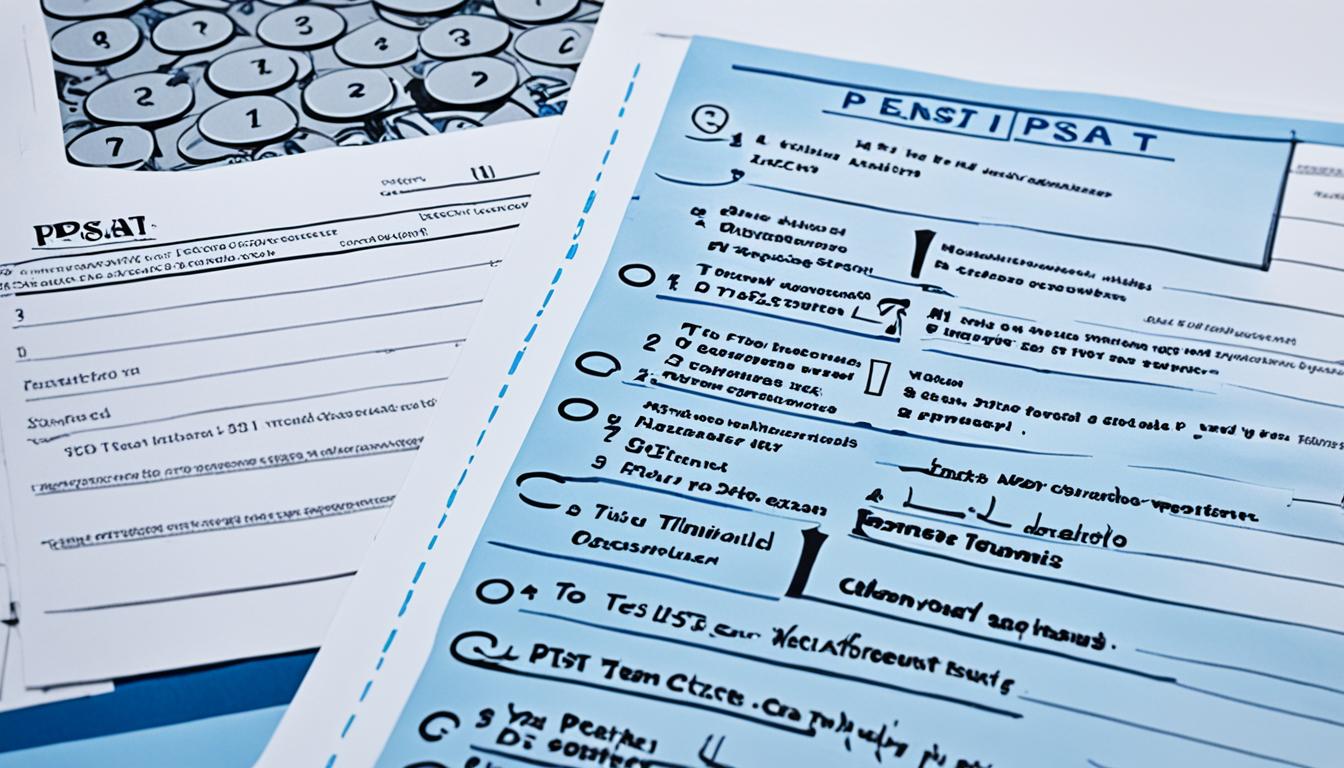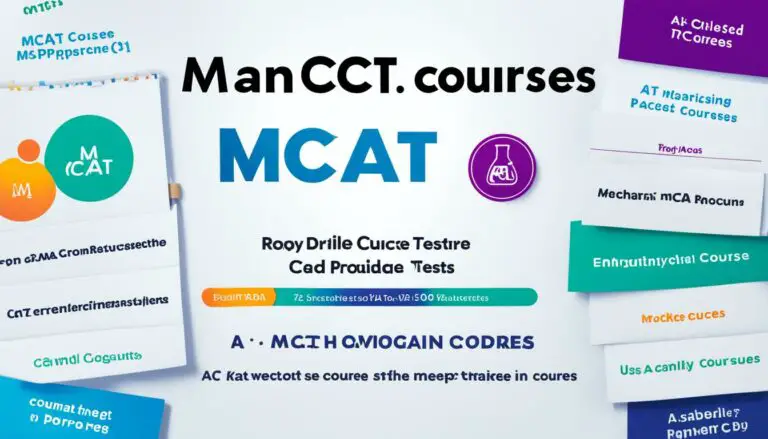Does the PSAT include an essay? Exam Breakdown
When it comes to the PSAT exam, students often wonder about the various sections and requirements. One common question that arises is: Does the PSAT include an essay?
PSAT Exam Format and Sections
The PSAT exam consists of three main sections – Reading, Writing & Language, and Math. Each section evaluates different skills and knowledge areas, providing students with a comprehensive assessment of their academic abilities.
Reading Section
The Reading section of the PSAT includes 47 multiple-choice questions. These questions are based on passages from various subjects such as literature, historical documents, social sciences, and natural sciences. Students are tested on their ability to comprehend and analyze written material, draw inferences, and identify main ideas.
Writing & Language Section
The Writing & Language section consists of 44 multiple-choice questions on grammar, vocabulary, and editing skills. Students must identify and correct grammar, punctuation, and sentence structure errors. They must also demonstrate a strong understanding of vocabulary and use appropriate language conventions, including effective word choice and clarity.
Math Section
The Math section of the PSAT evaluates students’ mathematical problem-solving skills. It includes two portions – Calculator and No Calculator. The Calculator portion allows students to use a calculator for 31 of the 48 questions, while the No Calculator portion does not permit calculator use for the remaining 17 questions. The topics covered in the Math section include algebra, geometry, data analysis, and trigonometry.
It’s important to note that the PSAT does not include a separate writing section or essay component. As a result, essay scoring is not applicable in the PSAT exam.
| PSAT Exam Sections | Number of Questions |
|---|---|
| Reading | 47 |
| Writing & Language | 44 |
| Math | 48 |
PSAT Math Test
The PSAT Math test is an important component of the PSAT exam, assessing students’ mathematical knowledge and problem-solving skills. It consists of 48 questions and covers various topics, including algebra, geometry, and trigonometry.
The test is divided into two portions: Calculator and No Calculator. The Calculator portion allows students to use a calculator for certain questions, while the No Calculator portion tests their ability to solve problems without a calculator. This ensures that students can apply their mathematical skills in different scenarios and enhances their understanding of mathematical concepts.
Tips for PSAT Math Test Preparation
Here are some tips to help you prepare for the PSAT Math test:
- Review the math topics covered in your high school curriculum, including algebra, geometry, and trigonometry.
- Practice solving math problems using various resources, such as textbooks, online practice tests, and study guides.
- Familiarize yourself with the format of the PSAT Math test by reviewing sample questions and understanding the types of problems you may encounter.
- Improve your problem-solving skills, including identifying key information, using appropriate formulas or equations, and applying logical reasoning to arrive at the correct answer.
- Manage your time effectively during the test by practicing timed practice sessions and allocating sufficient time to each question.
PSAT Reading Test
The PSAT Reading test is a crucial exam component, evaluating students’ reading comprehension and analytical skills. It consists of 47 multiple-choice questions that assess their ability to comprehend and interpret passages from various subjects, including literature, historical documents, social sciences, and natural sciences.
Unlike some standardized tests, the PSAT Reading test does not include essay prompts or require essay practice. Instead, students are expected to read passages carefully, analyze the information presented, and answer questions based on their text comprehension.
🌟 Hey Students! 🚀 Ready for the ultimate experience? Join us on Studentsinside.com's Facebook, YouTube, WhatsApp, and LinkedIn. Click now for tips, fun, and success vibes! 🌈✨ #StudentLife #JoinUs
This section of the PSAT is designed to measure students’ ability to understand complex texts and draw inferences from them. It tests their comprehension of the passages’ ideas and arguments and their capacity to analyze the author’s tone, purpose, and rhetorical strategies.
The PSAT Reading test is invaluable in developing critical reading skills essential for success in college and beyond. Through practice and study, students can enhance their ability to extract information from diverse texts efficiently.
Benefits of the PSAT Reading Test
The PSAT Reading test offers several benefits to students:
- Improves comprehension skills: Students develop their ability to extract key information and comprehend complex texts by engaging with a wide range of passages from different disciplines.
- Enhances critical thinking: The test challenges students to analyze and evaluate arguments, identify supporting evidence, and draw logical conclusions.
- Boosts vocabulary and knowledge: Students gain exposure to various topics and subject matter, expanding their vocabulary and general knowledge.
- Prepares for college-level reading: The PSAT Reading test provides valuable practice for the reading demands of college courses, helping students become confident and proficient readers.
| PSAT Reading Test Overview | Number of Questions | Topics Covered |
|---|---|---|
| 47 multiple-choice questions | 47 | Literature Historical documents Social sciences Natural sciences |

PSAT Writing & Language Test
The PSAT Writing & Language test is essential to the PSAT exam. This section assesses students’ grammar, vocabulary, and editing skills through 44 multiple-choice questions.
It focuses on non-fiction passages and arguments from various subjects, allowing students to demonstrate their proficiency in understanding and improving written texts.
This section of the PSAT does not include any writing prompts or essay-related questions. Instead, students are tasked with analyzing and revising existing passages to enhance clarity, coherence, and effectiveness.
Benefits of the PSAT Writing & Language Test
The PSAT Writing & Language test offers several benefits to students preparing for college admissions exams:
- Improves Grammar and Vocabulary: Students can enhance their writing proficiency by practicing grammar rules and expanding their vocabulary.
- Enhances Reading Comprehension: Analyzing and improving written passages helps students develop strong reading comprehension skills.
- Builds Editing Skills: Revising and editing passages based on grammar and stylistic conventions allows students to refine their editing abilities.
- Prepares for the SAT: The PSAT serves as a precursor to the SAT, and excelling in the Writing & Language test can boost confidence and performance in future college entrance exams.
Changes to the PSAT Format
Starting in fall 2023, the PSAT will undergo significant changes by introducing a digital format. This transition aims to enhance the testing experience for students and provide new features to aid in their performance. While these changes bring exciting advancements, it is important to note that the PSAT format remains consistent without including an essay section.
The digital PSAT will be shorter, saving students approximately 45 minutes of testing time. Additionally, it will incorporate new tools and resources to facilitate problem-solving and analysis. These features include a built-in graphing calculator, text annotation tools, and a timer to help students manage their time effectively.
Even with these updates, the format of the PSAT remains consistent with its existing sections, which include the Reading, Writing & Language, and Math components. Each section is designed to assess specific skills in reading comprehension, grammar, vocabulary, mathematical reasoning, and problem-solving.
Importance of the PSAT/NMSQT
The PSAT/NMSQT holds significant importance for students as it is a valuable practice version of the SAT. This exam allows students to familiarize themselves with the format and content of the SAT, helping them better prepare for college admissions exams.
While the PSAT/NMSQT provides insights into a student’s academic strengths and weaknesses in critical areas such as Reading, Writing & Language, and Math, it does not include essay prompts or scoring related to essays.
Aside from being a practice test, the PSAT/NMSQT offers additional benefits to students. It provides AP potential recommendations, helping them identify Advanced Placement courses they may excel in during high school. Furthermore, strong PSAT/NMSQT scores can open doors for students to enter the National Merit Scholarship Program, which recognizes and rewards academic excellence.
Overall, the PSAT/NMSQT plays a crucial role in students’ academic journeys, offering a platform for self-assessment, encouraging academic growth, and providing access to potential scholarships and opportunities.

PSAT Test Preparation
To prepare for the PSAT, students should focus on the content covered in their high school classes and employ effective study strategies. It is essential to review and understand the course material to ensure success on the exam.
Additionally, utilizing resources such as the official digital SAT prep at Khan Academy can help students practice and improve their skills. Although the PSAT does not include an essay section, thorough preparation in other areas can still contribute to overall success.
Here are some key tips for PSAT test preparation:
- Create a study schedule and stick to it. Allocate specific times for reviewing different subjects and topics.
- Review class notes, textbooks, and any relevant study materials teachers provide.
- Practice with sample questions and past PSAT exams to become familiar with the format and types of questions asked.
- Use online resources like Khan Academy, College Board, and other reputable educational websites to access additional study materials and practice questions.
- Form study groups with classmates to discuss and reinforce understanding of key concepts.
- Seek guidance from teachers or tutors if specific areas require further clarification or assistance.
Sample PSAT Study Schedule:
| Day | Subjects to Review |
|---|---|
| Monday | Math – Algebra |
| Tuesday | Reading Comprehension – Fiction |
| Wednesday | Writing & Language – Grammar |
| Thursday | Math – Geometry |
| Friday | Practice Test Review |
| Saturday | Rest |
| Sunday | Review Weak Areas |
PSAT/NMSQT Scoring
The PSAT/NMSQT scores range from 320 to 1520 and are calculated based on the section scores for Reading, Writing, and Math. However, since the PSAT does not include an essay component, there are no specific scoring or tips related to essays.
Taking the PSAT/NMSQT
The PSAT/NMSQT is an important exam students typically take in 11th grade, although some schools may offer it to 10th graders. It is administered at schools during October and provides students with valuable insights into their academic strengths and areas for improvement.
To take the PSAT/NMSQT, students must sign up through their respective schools. The school administration usually coordinates the registration process, and students will be informed about the specific dates, locations, and procedures for taking the exam.
PSAT/NMSQT Scores and Benefits
PSAT/NMSQT scores are crucial in understanding a student’s academic performance and setting goals for future exams, such as the SAT. These scores provide valuable insights into students’ strengths and weaknesses in key subject areas and help guide their college and career aspirations.
Additionally, PSAT/NMSQT scores unlock various student benefits and opportunities, including scholarships and personalized guidance.
Scores and Score Range
The PSAT/NMSQT scores are reported on a scale of 320 to 1520. The score range is divided into two main sections:
| Section | Score Range |
|---|---|
| Reading and Writing | 160 to 760 |
| Math | 160 to 760 |
The total score is the sum of the Reading and Writing score and the Math score. These scores provide a comprehensive overview of a student’s performance across the different sections of the PSAT/NMSQT.
Benefits and Opportunities
PSAT/NMSQT scores open doors to a variety of benefits and opportunities for students:
- Scholarship Opportunities: The PSAT/NMSQT serves as the initial screening for the National Merit Scholarship Program, which awards scholarships to top-performing students. Students with exceptional scores may qualify for recognition and various scholarship programs.
- College and Career Guidance: PSAT/NMSQT scores provide valuable insights into a student’s academic strengths and areas for improvement. These scores can help students identify their potential college majors, explore career options, and receive personalized guidance to enhance their academic journey.
- Advanced Placement (AP) Potential: PSAT/NMSQT scores include information about students’ potential to succeed in Advanced Placement (AP) courses. This guidance helps students identify subjects they may excel in and consider taking AP courses to challenge themselves academically.
FAQ
Q: Does the PSAT exam include an essay section?
A: No, the PSAT exam does not include an essay section. It consists of three main sections – Reading, Writing & Language, and Math.
Q: What are the sections in the PSAT exam?
A: The PSAT exam consists of three main sections – Reading, Writing & Language, and Math.
Q: Is there a separate writing section in the PSAT?
A: No, there is no separate writing section in the PSAT. The writing-related questions are included in the Writing & Language section.
Q: Are there essay prompts in the PSAT?
A: No, there are no essay prompts in the PSAT. The focus of the exam is on multiple-choice questions.
Q: Are there specific tips or formats for the essay in the PSAT?
A: No, there are no specific tips or format for the essay in the PSAT since it does not include an essay section.
Q: Are there any changes to the PSAT format?
A: Started in fall 2023, the PSAT will be administered digitally with new features. However, there are no changes to introduce an essay section.
Q: Why is the PSAT/NMSQT important for students?
A: The PSAT/NMSQT is a practice version of the SAT and helps students prepare for college admissions exams. It also provides insights into academic strengths and weaknesses and offers access to the National Merit Scholarship Program.
Q: How can students prepare for the PSAT?
A: The best way to prepare for the PSAT is to focus on the content covered in high school classes and study the course material effectively. Additional resources like the official digital SAT prep on Khan Academy can be used for practice.
Q: How are PSAT/NMSQT scores calculated?
A: PSAT/NMSQT scores range from 320 to 1520 and are calculated based on the section scores for Reading, Writing, and Math.
Q: When is the PSAT/NMSQT administered, and who is eligible?
A: The PSAT/NMSQT is typically taken by 11th-grade students in October. Some schools may offer it to 10th graders as well. Students need to sign up through their respective schools.
Q: What are the benefits of PSAT/NMSQT scores?
A: PSAT/NMSQT scores provide insights into a student’s academic performance, help set goals for future exams, access scholarship opportunities, and receive personalized college and career guidance.
Q: What are some common questions about the PSAT?
A: Some common questions about the PSAT include whether it has an essay section, eligibility for the National Merit Scholarship Program, and availability for younger grades (PSAT 8/9).








